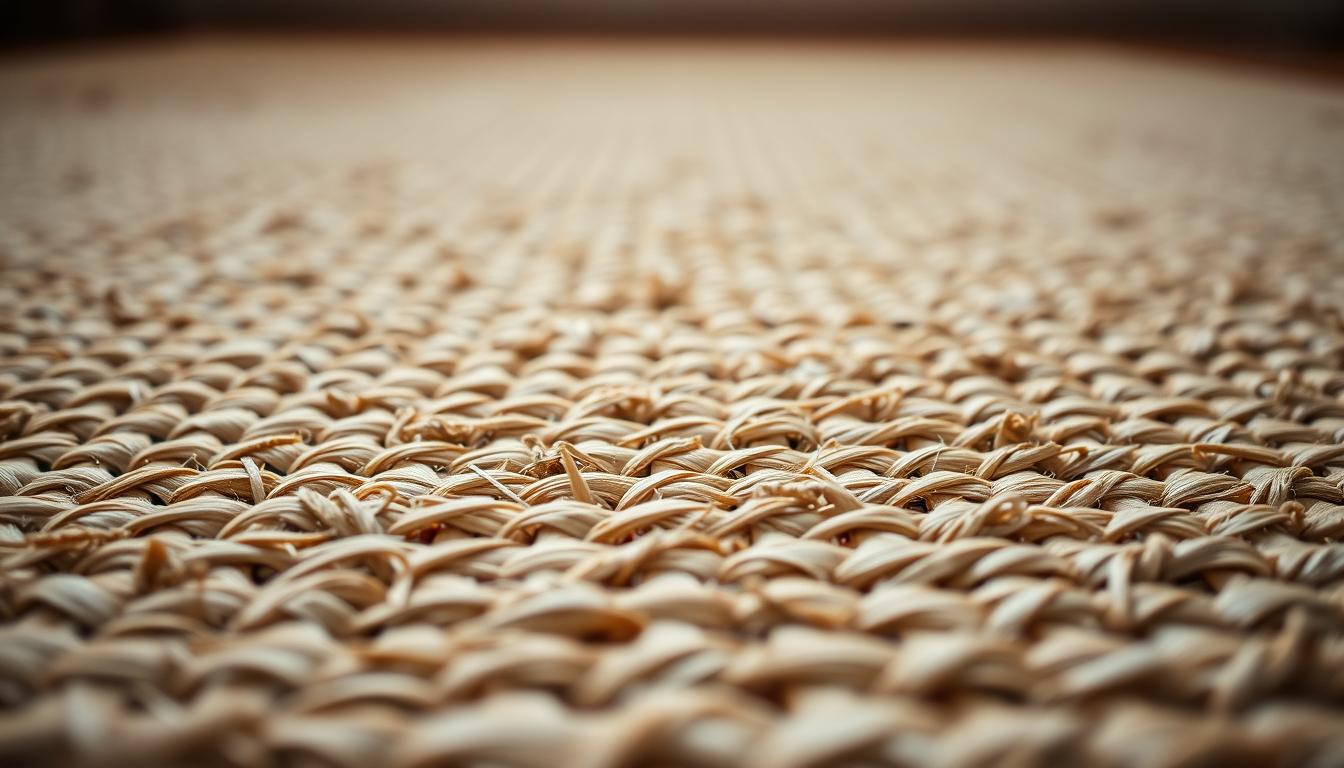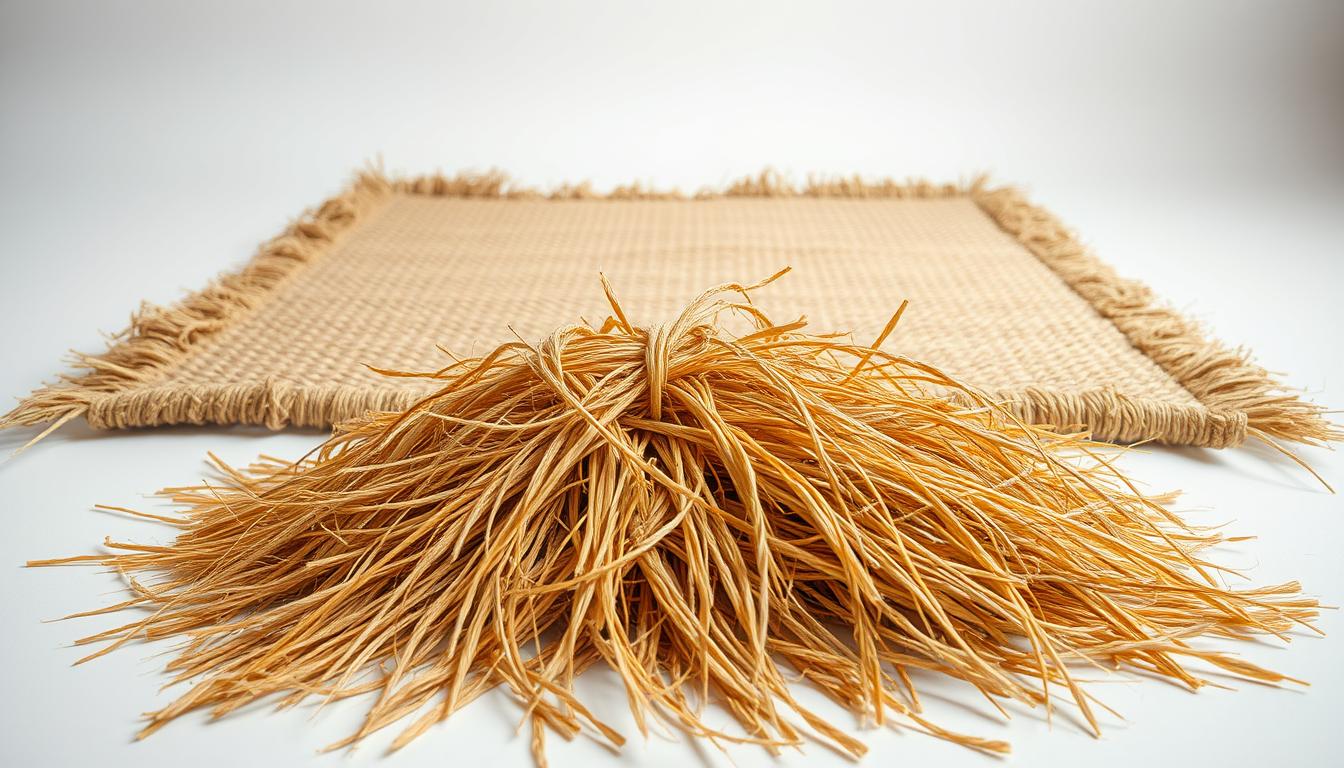
5 Risks of Getting Sisal Rugs Wet
Natural fiber floor coverings bring earthy charm to any space, but their delicate relationship with humidity often goes overlooked. Those beautifully textured surfaces you love might harbor hidden dangers when exposed to even small amounts of liquid. Made from agave plant fibers, these materials naturally pull moisture from the air—a trait that becomes problematic during spills or cleaning.

Many homeowners discover too late that water absorption leads to irreversible damage. Fibers swell and distort, creating permanent warping. Discoloration creeps in, stealing the rug’s original warmth. Worse yet, trapped dampness becomes a breeding ground for microorganisms that threaten both your decor and well-being.
This guide reveals why proactive care matters for preserving your floor covering’s structural integrity. You’ll learn how to avoid common pitfalls and extend the life of your natural fiber investment while maintaining its visual appeal.
Key Takeaways
- Natural fibers absorb moisture quickly, leading to swelling
- Prolonged dampness causes permanent warping and shape loss
- Discoloration occurs faster than with synthetic alternatives
- Mold growth creates health hazards in living spaces
- Structural damage reduces lifespan despite proper care
Introduction to Sisal Rugs and Their Natural Beauty
Transform your space with earthy textures sourced from sustainable agave fibers. These sustainable floor coverings blend environmental responsibility with organic charm, offering durability that synthetic alternatives struggle to match.
Rooted in Arid Landscapes
The agave plant thrives in dry climates, producing fibers that artisans weave into resilient textiles. This renewable resource requires minimal water, making it ideal for eco-conscious homes. Unlike synthetic materials, every strand tells a story of sustainable harvesting and traditional craftsmanship.
Texture Meets Timeless Design
Natural variations in fiber density create tactile surfaces that synthetic replicas can't duplicate. These textures interact beautifully with light, casting subtle shadows that change throughout the day. The neutral color palette adapts effortlessly to modern farmhouse, Scandinavian, or minimalist interiors.
| Feature | Sisal | Synthetic |
|---|---|---|
| Material Source | Agave plant | Petroleum-based |
| Environmental Impact | Biodegradable | Non-recyclable |
| Texture Complexity | Natural variations | Uniform patterns |
| Lifespan | 10+ years | 3-5 years |
Proper maintenance preserves both the visual appeal and structural integrity of these natural masterpieces. Their breathable construction helps regulate indoor humidity levels, contributing to healthier living environments.
Can Sisal Rugs Get Wet? Exploring Moisture Risks
Natural textiles interact uniquely with environmental factors, especially humidity. Their porous structure responds dramatically to liquid contact, creating challenges for maintenance. Let’s examine how these organic materials handle damp conditions.
Understanding Moisture Absorption
Agave-derived textiles possess hygroscopic properties, actively pulling water molecules from their surroundings. This breathability helps regulate room humidity but becomes problematic during spills. Fibers expand rapidly upon contact with liquids, altering their original shape.
Quick drying proves crucial. Lingering dampness allows fibers to contract unevenly, creating permanent ridges. High-humidity environments accelerate this process, causing gradual texture changes that compromise surface integrity.
Potential for Warping and Damage
Structural deformation starts within minutes of water exposure. Swollen strands push against each other, distorting weave patterns. Severe cases lead to buckling that no amount of weighting can flatten completely.
Repeated moisture incidents compound these effects. Each cycle weakens fiber bonds, reducing tensile strength. Unlike synthetic counterparts, natural materials lack plasticizers that resist shape changes.
Proper care extends functional lifespan significantly. Immediate blotting of spills prevents deep penetration. Strategic placement away from humidifiers or entryways reduces environmental risks. These practices preserve both aesthetic appeal and structural reliability.
Understanding the Risks of Excessive Moisture
Moisture exposure transforms natural fiber floor coverings from assets to liabilities. Agave-derived materials react unpredictably to humidity, triggering irreversible structural changes. Three critical consequences demand your attention.
Fiber Swelling
Agave fibers expand rapidly when damp, distorting tight weaves within minutes. This swelling creates ridges that resist flattening. Immediate blotting reduces distortion, but delayed action leads to permanent warping.
Discoloration and Mold Growth
Organic compounds in natural fibers feed microbial colonies when damp. Dark spots signal mold establishment, while yellowing indicates cellulose breakdown. Both issues require professional intervention to prevent health risks.
| Moisture Impact | Natural Fibers | Synthetic Fibers |
|---|---|---|
| Swelling Time | 2-5 minutes | 15+ minutes |
| Mold Risk | High | Low |
| Shape Recovery | Poor | Excellent |
Impact on Rug Longevity
Repeated moisture exposure weakens fiber bonds. This accelerates wear patterns, particularly in high-traffic zones. A single spill won’t destroy your floor covering, but cumulative damage slashes lifespan by 60-80%.
For maintenance strategies that avoid water contact, review our step-by-step cleaning guide. Proper care preserves texture and prevents costly replacements.
Preventative Care and Protective Measures
Natural fiber floor protection demands proactive strategies beyond routine cleaning. Two essential methods safeguard against moisture while preserving organic textures.

Foundation Defense Systems
Quality underlays create critical separation between flooring surfaces and natural textiles. These shock-absorbent layers reduce friction damage by 40% while blocking ground-level humidity. Breathable materials like natural rubber allow airflow that prevents condensation buildup.
| Pad Type | Thickness | Moisture Protection | Best Use |
|---|---|---|---|
| Natural Rubber | 1/4" | High | Hardwood floors |
| Felt | 1/8" | Medium | Low-traffic areas |
| PVC-Free | 3/16" | Maximum | High-humidity zones |
Surface Shield Applications
Specialized coatings form invisible barriers against liquid penetration. These plant-based formulas repel spills without altering natural textures. Always test treatments on hidden areas first to ensure colorfastness.
Combine both methods for comprehensive protection. Pairing a non-slip underlay with periodic surface renewals extends functional lifespan by 3-5 years. Proper care maintains structural integrity while reducing replacement costs.
Proper Placement and Environmental Considerations
Strategic positioning transforms how natural fiber floor coverings interact with their surroundings. Every room presents unique challenges that determine whether your textile thrives or deteriorates prematurely.
Zone Defense Against Humidity
Steer clear of spaces with fluctuating moisture levels. Bathrooms and basements create perfect storms for fiber swelling, while kitchens expose textiles to steam and accidental spills. Even laundry rooms introduce hidden risks through appliance vibrations and humidity spikes.
Ideal Room Selection Strategies
Prioritize dry, climate-controlled areas like living rooms or bedrooms. These spaces typically maintain stable humidity levels below 50% - the sweet spot for natural materials. Position floor coverings away from:
- South-facing windows causing UV damage
- Heating vents creating hot spots
- Entryways tracking outdoor moisture
High-traffic zones demand extra consideration. Rotate decorative pieces seasonally to distribute wear evenly. For spaces requiring water-resistant options, explore alternative natural fibers better suited to occasional dampness.
Seasonal changes require adaptability. Use dehumidifiers during summer months and maintain 2-3 feet of clearance from radiators in winter. Proper placement paired with routine monitoring preserves both appearance and structural soundness, as detailed in this comprehensive care guide.
Cleaning and Maintenance Guidelines for Sisal Rugs
Proper upkeep preserves both the beauty and durability of natural fiber floor coverings. Three essential practices protect your investment while maintaining organic textures intact.

Gentle Vacuuming Techniques
Use vacuum cleaners with soft bristle attachments to prevent fiber damage. Adjust suction settings to medium power – high pressure can unravel tight weaves. Always move the nozzle in the direction of the natural fiber pattern.
Spot Cleaning Best Practices
Blot liquid accidents within 30 seconds using white cotton cloths. Apply light pressure from the spill’s edge toward the center to contain stains. For solids, scrape gently with a dull knife before dabbing.
Selecting Safe, Mild Cleaners
Choose plant-based formulas labeled for natural materials. Test solutions on hidden corners first. Avoid these harmful ingredients:
- Bleach or chlorine compounds
- Ammonia-based products
- Enzyme cleaners for pet stains
For persistent marks, mix 1 tsp clear dish soap with 2 cups cool water. Dampen – don’t soak – the cloth, working in small circular motions. Dry immediately with fans or open windows to prevent moisture retention.
Comparing Sisal with Other Natural Fiber Rugs
Selecting natural fiber floor coverings requires understanding key differences between materials. Two popular choices offer distinct advantages depending on your space’s needs and foot traffic patterns.
Strength Versus Softness
Sisal’s rugged durability comes from tightly woven agave plant fibers, creating surfaces that withstand heavy use. These textiles maintain shape under pressure, resisting dents from furniture legs. Jute’s softer strands from the Corchorus plant provide cushioning underfoot but show wear faster in active zones.
Texture plays a crucial role in material selection. Sisal’s coarse weave naturally hides dirt between its fibers, while jute’s smoother surface highlights spills. Explore our comparison of natural fiber options for detailed performance metrics.
Traffic Pattern Solutions
High-activity spaces demand resilient materials. Entryways and hallways benefit from sisal’s abrasion resistance, which handles shoe grit better than delicate jute. For cozy bedrooms or formal sitting areas, jute’s plush feel adds comfort without heavy wear concerns.
Consider these placement strategies:
- Use sisal near exterior doors
- Position jute under seating areas
- Rotate floor coverings seasonally
Your lifestyle and room function ultimately determine the ideal choice. Pair material strengths with environmental conditions for lasting satisfaction.
FAQ
How does moisture affect natural fiber carpets?
Natural fibers like sisal absorb water easily, leading to swelling, warping, or mold. Prolonged exposure weakens the material, shortening its lifespan. Always address spills immediately to minimize damage.
What happens if water spills aren’t cleaned quickly?
Untreated spills cause discoloration, fiber distortion, or mold growth. Blot liquids gently with a dry cloth and avoid rubbing. For deeper stains, use mild soap and lukewarm water sparingly.
Are there treatments to protect against stains?
Stain-resistant sprays like Scotchgard can add a protective layer. However, test a small area first to ensure compatibility. Avoid harsh chemicals, as they may strip the rug’s natural texture.
Where should these carpets be placed to avoid damage?
Keep them away from humid spaces like bathrooms or kitchens. Opt for low-traffic areas like bedrooms or living rooms. Use rug pads to reduce friction and improve airflow beneath the fibers.
What’s the best way to clean spills without causing harm?
Blot gently with a microfiber cloth, working from the spill’s edge inward. Avoid soaking the area. For stubborn spots, mix a drop of dish soap with cold water and dab lightly. Never use steam cleaners.
How do sisal and jute differ in high-traffic spaces?
Sisal’s coarse texture handles wear better, making it ideal for entryways. Jute is softer but less durable, suited for quieter zones like bedrooms. Both benefit from rug pads to prevent shifting.
Can discoloration be reversed once it occurs?
Mild discoloration may fade with careful cleaning, but severe cases often require professional help. Prevent it by keeping rugs dry and avoiding direct sunlight, which can bleach fibers over time.
Why use a rug pad under natural fiber carpets?
Rug pads like those from Mohawk or Gorilla Gripper reduce slipping, cushion footsteps, and prevent moisture buildup. They also protect floors from scratches and extend the rug’s durability.
Is sisal suitable for humid environments like bathrooms?
No. High humidity causes fibers to swell and promotes mold. Opt for synthetic blends or treated options in moisture-prone areas. Sisal thrives in dry, well-ventilated spaces.
What makes sisal an eco-friendly flooring choice?
Made from the agave plant, sisal is biodegradable and renewable. Its production uses minimal water, and its durability reduces replacement frequency, supporting sustainable living.









